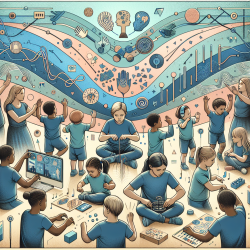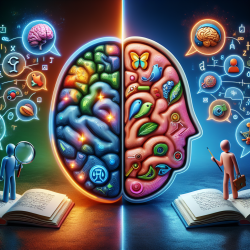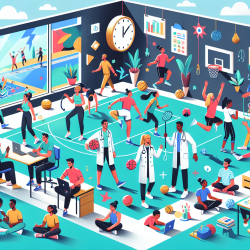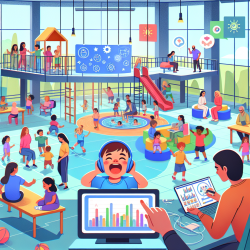Introduction: The Power of Mu Rhythm in Speech Therapy
In the realm of speech-language pathology, data-driven decisions are paramount. Recent research titled Time-Frequency Analysis of Mu Rhythm Activity during Picture and Video Action Naming Tasks sheds light on how mu rhythm activity can enhance therapeutic outcomes, particularly in children. This study reveals that video stimuli elicit stronger sensorimotor and linguistic integration compared to static images, providing valuable insights for practitioners.
Understanding Mu Rhythm: A Gateway to Improved Communication
Mu rhythm, a brainwave pattern detected via EEG, is pivotal in understanding sensorimotor integration during action naming tasks. The study highlights that video stimuli significantly enhance mu rhythm activity, especially in the left hemisphere, compared to pictures. This finding is crucial for speech therapists aiming to improve action verb naming in children, as it suggests that dynamic stimuli can better engage the brain's sensorimotor networks.
Practical Applications: Incorporating Video Stimuli in Therapy
For practitioners, the implications are clear: incorporating video stimuli into therapy sessions can lead to more robust activation of sensorimotor pathways, enhancing the linguistic processing of action verbs. This approach is particularly beneficial for children, who often respond more dynamically to video content. By leveraging these insights, therapists can tailor interventions to maximize engagement and effectiveness.
- Enhanced Engagement: Videos capture children's attention more effectively than static images, leading to better engagement and learning outcomes.
- Improved Sensorimotor Integration: Videos provide a more natural representation of actions, facilitating stronger connections between sensorimotor and linguistic processes.
- Tailored Interventions: By understanding individual responses to video stimuli, therapists can customize interventions to suit each child's unique needs.
Encouraging Further Research
While the current study provides a strong foundation, further research is essential to explore the full potential of mu rhythm activity in therapeutic settings. Investigating the effects of video stimuli on different populations, including children with developmental disorders, can provide deeper insights into optimizing therapy techniques.
Conclusion: A Path Forward for Speech-Language Pathology
Incorporating video stimuli into speech therapy sessions offers a promising avenue for enhancing communication outcomes in children. By understanding and leveraging mu rhythm activity, practitioners can create more effective, engaging, and personalized interventions. As we continue to explore the intersection of sensorimotor and linguistic processes, the potential for improving child communication is immense.
To read the original research paper, please follow this link: Time-Frequency Analysis of Mu Rhythm Activity during Picture and Video Action Naming Tasks.










